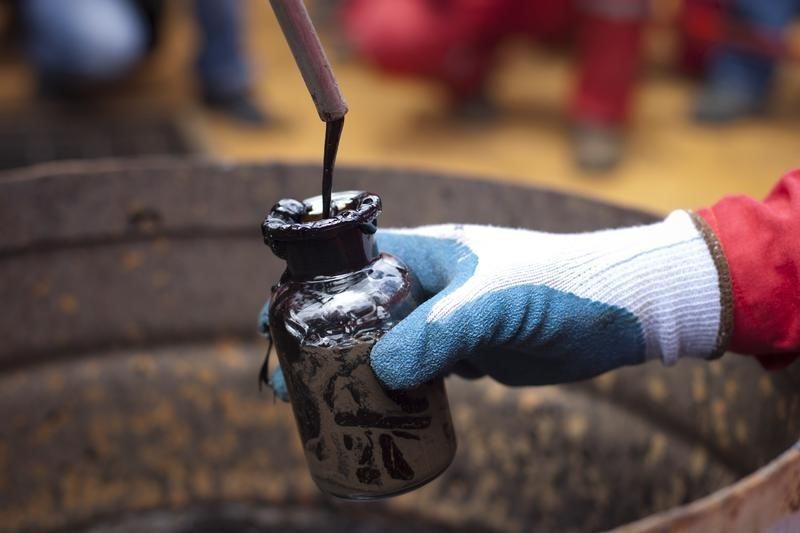By Barani Krishnan
Investing.com -- The same China that drove oil prices to six-month lows last week helped shore them above the $90-per-barrel zone on Monday as commodity markets were mixed ahead of this week’s much anticipated Consumer Price Index report for July.
China surprised markets with faster-than-expected growth in oil purchases for last month. The world's top crude importer took in 8.79 million barrels per day in July, up from a four-year low in June, but still 9.5% less than a year earlier, customs data released at the weekend showed.
“We know that oil demand in China is about 4% below what it was a year ago because of Covid lockdowns. Yet there are signs that could change,” said Phil Flynn, energy analyst at the Chicago-based Price Futures Group brokerage.
U.S. West Texas Intermediate oil, which serves as the benchmark for U.S. crude, settled up $1.75, or almost 2%, at $90.76 per barrel. WTI dropped about 10% last week after striking a six-month low of $87.03.
Sunil Kumar Dixit, chief technical strategist at SKCharting.com, said a trade above $96.60 could change WTI’s short-term momentum and set it up for a rally towards $99 and $101.
Otherwise, WTI could stumble again, resuming its journey south, toward the support cluster of $88-$85-$82, he said.
Brent, the London-traded global benchmark for crude, settled up $1.73, or 1.8%, at $96.65. On Friday, Brent struck a six-month low of $92.79. Brent also lost 14% last week in its worst weekly loss since the COVID-19 outbreak of April 2020 that virtually destroyed energy demand.
Whatever rebound oil sees over the next 48 hours could be capped by concerns over what the CPI report for July -- due on Wednesday -- could be.
Economists tracked by Investing.com are projecting a growth of 8.7% in the CPI for the year to July, versus the rise of 9.1% during the 12 months to June. If true, it will be a sign that the Federal Reserve’s efforts in fighting inflation are starting to work.
Yet, a reduction of less than half a percent in year-on-year inflation barely makes a difference to what the Fed is fighting for. The central bank, as we all know, wants to bring inflation back to its long-cherished target of 2% a year; or 4.5 times less than what the CPI was for July.
Pump prices of U.S. gasoline — one of the biggest components of CPI — have fallen from June record highs of $5 a gallon to under $4 now. That could certainly take some heat off the headline CPI number when the July update is released on Wednesday. Despite that, core CPI, stripped off volatile gasoline and food prices, is expected to increase by 0.5% month-over-month and 6.1% year-on-year.
What could be worse is that the headline CPI number turns out to be higher than June’s 9.1%. There is no guarantee that it would. But if it does, then where does that leave the Fed’s policy-making Federal Open Market Committee, or FOMC?
That’s the question that’s bugging traders of oil, gold and other dollar-denominated commodities.
The FOMC has already hiked interest rates four times since March, bringing key lending rates from nearly zero in February to as high as 2.5% last month, in an attempt to curb inflation. The committee has another three rate revisions left before the year is over, with the first of that due on Sept. 21.
Until the release of the July non-farm payrolls report on Friday, the consensus among money market traders was for a 50-basis point hike next month. The jobs report, however, changed all that as it confirmed an addition of 528,000 positions for July versus economists’ expectations for an increase of just 250,000 jobs.
The real problem with the strong job numbers is the attendant pressure it brings on wages. U.S. hourly wages have risen month after month since April 2021, expanding by a cumulative 6.7% over the past 16 months, or an average of 0.4% a month.
Aside from the CPI, the producer price index figures for July will be released on Thursday, along with the weekly report on initial jobless claims, while the University of Michigan consumer sentiment index will be published on Friday.
As of Monday afternoon, Investing.com’s Fed Rate Monitor Tool showed a 67% chance that the September rate hike will be 75 basis points — the same as in June and July. The 75-basis point hike, incidentally, was the highest in 28 years when it was introduced two months back.
